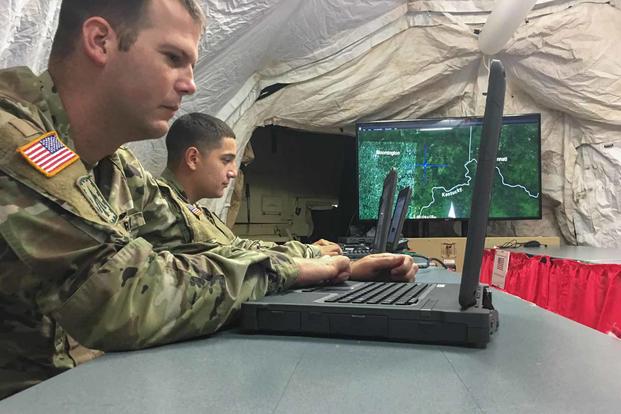Army Secretary Ryan McCarthy said Wednesday the service will need to man its units with software coding experts to be able to launch deadly-fast precision fires on enemy forces in the next war.
A large part of the Army's modernization effort will rely on precise algorithms to shorten the time it takes to identify enemy targets and destroy them with long-range precision fires. To make that happen, the service will need soldiers on the battlefield who can adjust software coding in the middle of a battle, McCarthy said.
The Army has launched an effort to turn existing soldiers into software developers by creating special curricula for the university level of instruction.
Read Next: Russia Reports Successful Test Launch of Hypersonic Missile
"We have created a series of curriculum for software engineering, data scientists ... down at the University of Texas," McCarthy told a virtual audience Wednesday during an event at the Hudson Institute. "We are going to be able to develop software developers, 50-60 at a time in a class. ... We are going to need software developers at the edge; they are going to need to be in battalions or brigade headquarters working with fire direction because maybe they have to change the software code at the edge."
This need to train soldiers for such highly technical jobs was reinforced in September during Project Convergence, the first in a series of exercises in which the Army teamed low-Earth orbiting satellites, drones and Marine Corps F-35B Lightning II aircraft with algorithms and artificial intelligence to speed up how targeting information can be transferred to artillery batteries.
"We were able to reduce the time span for calling for fire from minutes down to 45 seconds," McCarthy said. "So, what you see in this exercise is we are fusing information faster to get it in the hands of the decision-maker ... to put lead on a target."
The Project Convergence exercise, held at Yuma Proving Ground, Arizona, is scheduled again for 2021 and 2022 to test expanded capabilities and involve the Air Force and other services.
During the experiment, Army engineers and scientists worked alongside active units, writing code to adjust the algorithms and move faster, McCarthy said.
"When you can become the faster to throw the punch, you are going to win in a fight," he said, describing the need to train more soldiers for software development and other high-tech jobs.
"We have learned that out in the field because we have had them out there and it speeds up the process," McCarthy said. "We know we are going to have to create a lot more of these men and women. We just don't know how many yet.
"For now, we are trying to make them as fast as we can and put them not only on the institutional side where they are going to develop the weapons systems but down at the street level ... in operational headquarters helping commanders make decisions for firing solutions."
-- Matthew Cox can be reached at matthew.cox@military.com.
Related: Army's New Target Tracking System Aims to Quicken Artillery Kills













